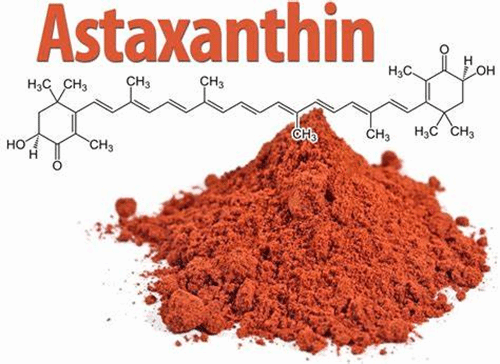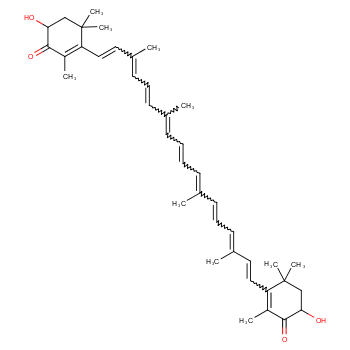Astaxanthin: The Powerful Antioxidant
Astaxanthin is a valuable red pigment and antioxidant extensively utilized in pharmaceuticals, cosmetics, and the food industry. Belonging to the carotenoid group, it can be found in various microorganisms and marine animals, with natural sources including algae, yeast, salmon, trout, krill, shrimp, and crayfish. Approved by the FDA as a food coloring agent for animal and fish feed, astaxanthin is also used as a dietary supplement for humans and animals to potentially prevent or reduce the risk of diseases like diabetes, cardiovascular issues, and cancer.

Exploring the Biological Activities and Benefits
Antioxidant Power
Research indicates that astaxanthin exhibits superior antioxidant properties compared to other carotenoids like lutein, lycopene, α-carotene, and β-carotene. With antioxidant activity 10 times higher than zeaxanthin, lutein, keratanin, and β-carotene, and 100 times higher than α-tocopherol, astaxanthin's unique molecular structure plays a crucial role. It effectively traps free radicals in cell membranes and scavenges them both inside and outside the cells. Studies on rabbits have shown enhanced antioxidant enzyme activities like superoxide dismutase and thioredoxin reductase after astaxanthin consumption.
Combatting Lipid Peroxidation
Astaxanthin's molecular structure allows it to protect cell membranes from oxidative damage more effectively than β-carotene and Vitamin C. It prevents lipid peroxidation, enhances immune function, and regulates gene expression. Studies have demonstrated its significant anti-lipid peroxidation activity in various biological samples.
Anti-Inflammatory Properties
Astaxanthin exhibits anti-inflammatory effects, reducing bacterial load and inflammation in the stomach of infected mice. It also protects against oxidative stress and inflammation in renal cells.
Diabetes Management
Research suggests that astaxanthin can reduce oxidative stress in pancreatic beta cells caused by hyperglycemia, improve glucose and insulin levels, and restore lymphocyte dysfunction in diabetic rats. It also shows promise in preventing diabetic nephropathy.
Preventing Cardiovascular Diseases
Astaxanthin is considered a potential therapeutic agent against atherosclerotic cardiovascular diseases. Studies have shown positive effects on blood pressure and arterial blood flow, indicating its cardiovascular benefits.
Anticancer Properties
Astaxanthin demonstrates significant anti-tumor activity and inhibits the growth of various cancer cells. It has shown promising results in preventing chemically induced cell death and tumor growth in animal models.
Are There Risks Associated with Astaxanthin?
Astaxanthin is generally well-tolerated with no reported side effects when consumed in food. However, excessive intake may lead to skin pigmentation in animals and gastrointestinal discomfort in humans. It is essential to consume astaxanthin in moderation to avoid potential adverse effects.
References:
[1] RANGA RAO AMBATI. Astaxanthin: sources, extraction, stability, biological activities and its commercial applications–a review. Marine Drugs, 2014, 12 1: 128-152. DOI:10.3390/md12010128.
[2] BARBARA STACHOWIAK; Piotr S. Astaxanthin for the Food Industry. Molecules, 2021. DOI:10.3390/molecules26092666.
[3] JING CHEN, XIANGZHAO MAO. Heterologous Expression of the Plant-Derived Astaxanthin Biosynthesis Pathway in Yarrowia lipolytica for Glycosylated Astaxanthin Production. Journal of Agricultural and Food Chemistry, 2023. DOI:10.1021/acs.jafc.2c08153.
[4] YANJUN LIU. Hydrophilic Astaxanthin: PEGylated Astaxanthin Fights Diabetes by Enhancing the Solubility and Oral Absorbability. Journal of Agricultural and Food Chemistry, 2020. DOI:10.1021/acs.jafc.0c00784.




